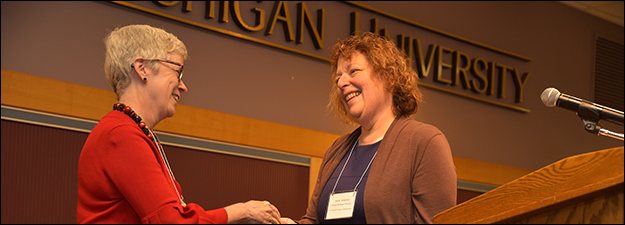Space-Time Continuum and Medieval Manuscripts
Sponsoring Organization(s)
Manuscript Technologies Forum Interest Group, The English Association
Organizer Name
Elaine M. Treharne
Organizer Affiliation
Stanford Univ.
Presider Name
Benjamin Albritton
Presider Affiliation
Stanford Univ.
Paper Title 1
Medieval Manuscripts and Microfiche: The Ethics of Residual Media
Presenter 1 Name
Matthew T. Hussey
Presenter 1 Affiliation
Simon Fraser Univ.
Paper Title 2
Interpreting the British History across Time: Trojan Genealogies in Welsh Manuscripts
Presenter 2 Name
Georgia Henley
Presenter 2 Affiliation
Harvard Univ.
Paper Title 3
Conceptual Dimensions and Physical Realities as Structural Elements of Texts
Presenter 3 Name
Thomas A. Bredehoft
Presenter 3 Affiliation
Chancery Hill Books and Antiques
Paper Title 4
Response
Presenter 4 Name
Dorothy Kim
Presenter 4 Affiliation
Vassar College
Start Date
13-5-2017 1:30 PM
Session Location
Schneider 1265
Description
A manuscript represents a material moment in which the space of the textual object and the time of its historical production form a continuum between the past and the present. We are able to connect directly with all makers and users of a book as we investigate books' texts and images, margins, quires, binding structures. Indeed, as we handle the manuscript, gaze at its digital avatar, and interpret its contents, we ourselves become part of that space-time continuum. This session will ask four presenters who work with manuscripts from major medieval literary traditions to consider, self-consciously, what we do as scholars when we re-present the manuscript: in digital form, in microfiche, in print edition, and in exact facsimile. A formal response will seek to draw together the major concepts and issues raised by these seventeen-minute papers.
Elaine M. Treharne
Space-Time Continuum and Medieval Manuscripts
Schneider 1265
A manuscript represents a material moment in which the space of the textual object and the time of its historical production form a continuum between the past and the present. We are able to connect directly with all makers and users of a book as we investigate books' texts and images, margins, quires, binding structures. Indeed, as we handle the manuscript, gaze at its digital avatar, and interpret its contents, we ourselves become part of that space-time continuum. This session will ask four presenters who work with manuscripts from major medieval literary traditions to consider, self-consciously, what we do as scholars when we re-present the manuscript: in digital form, in microfiche, in print edition, and in exact facsimile. A formal response will seek to draw together the major concepts and issues raised by these seventeen-minute papers.
Elaine M. Treharne

